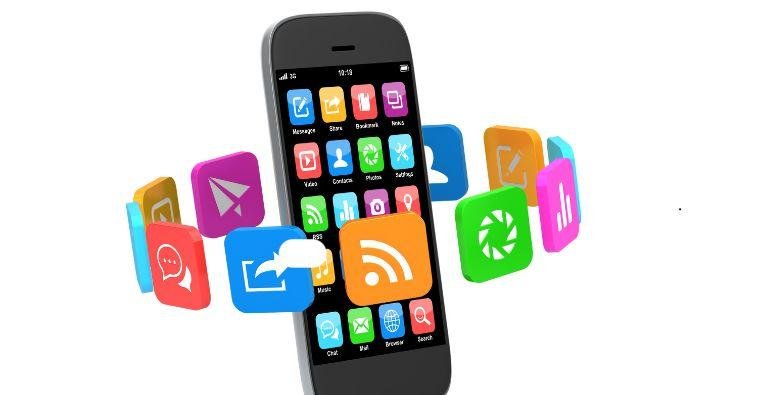Increased Convenience and Speed
One of the most significant advantages of mobile payments is the speed and convenience they offer. Consumers no longer need to fumble with cash, coins, or credit cards when making purchases. With services like Apple Pay, Google Pay, and Samsung Pay, you can simply tap your phone near a point-of-sale (POS) terminal, and the transaction is completed in seconds. This has made shopping more efficient, especially in busy retail environments, reducing long queues and improving the overall shopping experience.
Enhanced Security Features
Mobile payment systems are designed with advanced security features to ensure that consumer information is protected. Many mobile wallets use biometric authentication (such as fingerprint scanning or facial recognition) to authorize payments, adding an extra layer of security. Additionally, mobile payments often use tokenization, where a unique digital token is generated for each transaction instead of transmitting sensitive credit card numbers. This reduces the risk of fraud and identity theft, making mobile payments a safer option than traditional methods like swiping a credit card.
A Seamless Shopping Experience
Mobile payments are not just limited to in-store transactions. They are also changing the way we shop online. With services like PayPal, Apple Pay, and Google Pay integrated into e-commerce websites and mobile apps, consumers can complete purchases with just a few taps, without needing to manually enter credit card details. This seamless checkout process has led to higher conversion rates for online retailers, as it reduces friction and encourages impulse buying. It’s also making repeat purchases easier for customers, leading to increased customer loyalty and satisfaction.
Integration with Loyalty Programs and Discounts
Many mobile payment services now integrate with loyalty programs, allowing consumers to earn rewards and discounts with every purchase. For instance, when you use your mobile wallet at participating retailers, you can automatically collect loyalty points, redeem rewards, and even apply personalized discounts—all without needing to carry loyalty cards or coupons. This integration encourages consumers to use mobile payments more frequently, as it enhances the shopping experience and provides added value.
Contactless Payments and Hygiene Considerations
The COVID-19 pandemic accelerated the adoption of contactless payment methods, as consumers became more cautious about touching physical payment terminals. Mobile payments, which are inherently contactless, offer a hygienic alternative to cash and cards. Consumers can complete transactions without touching anything except their own devices, making it an attractive option for health-conscious shoppers. As a result, many retailers have adopted contactless payment systems to meet consumer preferences and maintain safety standards.
Global Reach and Accessibility
Mobile payments have made shopping more accessible, both for consumers and businesses. With mobile wallets, consumers can make purchases anywhere in the world without worrying about currency conversions or carrying cash. This is particularly beneficial for international travelers who can avoid the hassle of exchanging money or dealing with foreign credit card fees. For businesses, adopting mobile payment systems can expand their customer base by making it easier to accept payments from international customers. As mobile payments become more widely accepted, the global marketplace becomes increasingly interconnected.
New Business Opportunities
Mobile payments are also creating new business opportunities, particularly for small businesses and entrepreneurs. With services like Square and PayPal Here, small business owners can easily accept card payments and mobile wallet transactions through mobile devices. This eliminates the need for expensive point-of-sale hardware and gives smaller companies the ability to compete with larger retailers. Additionally, mobile payment systems often come with built-in analytics, helping business owners track sales, customer behavior, and inventory, ultimately improving operational efficiency.
The Rise of Mobile-Only Wallets and Fintech
The rapid growth of mobile payments has led to the rise of mobile-only wallets, such as Venmo, Cash App, and Revolut. These fintech companies offer more than just payment processing; they provide additional financial services like money transfers, investment options, and even cryptocurrency trading. These platforms are reshaping how people manage their finances and make payments, especially for younger generations who are more comfortable using mobile technology. As these platforms continue to grow, they are likely to disrupt traditional banking and payment models.
Mobile Payments and Personalization
As mobile payment systems evolve, they’re increasingly able to deliver personalized shopping experiences. By integrating with customer data, these systems can offer tailored promotions, discounts, and product recommendations based on purchasing history and preferences. For example, you might receive a special discount on a product you’ve purchased in the past, or a store may notify you of a sale on items you frequently buy. This level of personalization encourages repeat purchases and fosters stronger customer relationships.
The Future of Mobile Payments
The future of mobile payments looks incredibly promising. As 5G networks become more widespread, the speed and reliability of mobile payments will increase, further enhancing the consumer experience. Additionally, innovations such as biometric payments (which use facial recognition or voice commands for payment authorization) could become more mainstream, allowing for even faster and more secure transactions. We’re also likely to see further integration of mobile payments with other technologies like wearables, smart home devices, and even automotive systems, allowing consumers to make payments seamlessly from virtually anywhere.




